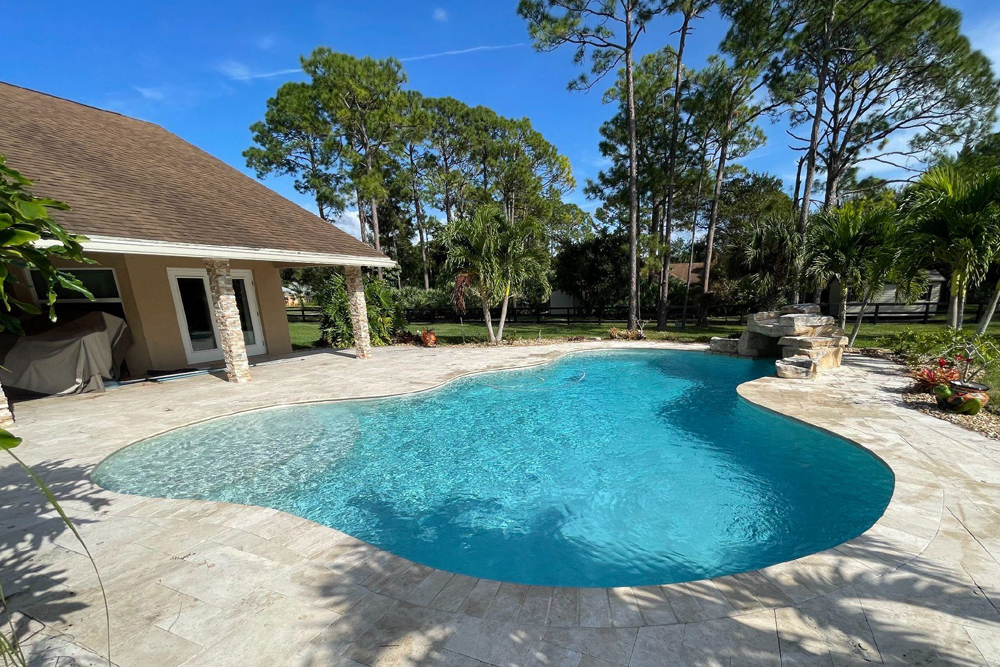- Remove Floating Debris:
Immediately following a severe storm, the first crucial step is to eliminate any floating debris on the pool’s surface and the settled debris at the bottom. Utilize a skimmer or leaf net on an extendable pole to rake and scoop up leaves and debris. This initial cleanup is essential in preventing the growth of algae, as storms bring pollen and plant matter that can encourage algae development if left untreated.
- Clean Skimmer Baskets and Pump Strainer:
Ensure the power and filtration are off, then proceed to clean both the skimmer baskets and the pump strainer thoroughly. A strong storm can deposit a significant amount of debris in these components, and proper cleaning is necessary to prevent system clogs.
- Check Electrical Equipment and Restore Power:
Before turning the power back on, inspect the pool equipment for any signs of water damage. If potential damage is observed, refrain from restoring power and seek assistance from a licensed electrician. Once dry and free from water damage, proceed to turn on the power for filtration and circulation systems.
- Clean and Backwash the Pool Filter:
Storms introduce large amounts of small particles, dust, and dirt into the pool water, requiring the cleaning and possibly backwashing of the pool filter. Follow the manufacturer’s manual for proper cleaning, replace DE filter media for DE filters, and consider cleaning or replacing cartridges for cartridge filters.
- Check and Adjust Water Level:
Assess the water level in the pool, addressing excess water caused by heavy rainfall or flooding. Use a sump pump or siphon to bring the water level back to normal. A mid-tile line serves as a reference point; if it aligns with the mid-tile line, the water level is optimal.
- Vacuum and Brush Pool Surfaces:
Once the pool equipment is operational and the water level is appropriate, focus on removing fine dirt and dust. Use an automatic pool cleaner or pool vacuum to vacuum debris off the pool bottom. Thoroughly brush the pool walls to eliminate dirt and debris. Repeat this process until the water is nearly clear.
- Shock and Balance Water Chemistry:
While the pool water may appear clean, potentially harmful microscopic contaminants still exist. To prevent algae and harmful bacteria growth, shock the pool and raise the chlorine level to approximately 10.0 ppm. After the chlorine level decreases to around 3.0 ppm, balance the water chemistry, focusing on pH, total alkalinity, and calcium hardness.
- Run Circulation and Filtration Systems:
The final step involves running the circulation and filtration systems until the water is clean, which may take several days. Regularly monitor the skimmer and pump strainer basket, as well as the filter pressure, backwashing if necessary, to ensure thorough particle removal after the storm.
For any questions regarding post-storm pool cleanup, feel free to reach out. Our mission is to provide valuable education and inspiration for an enhanced outdoor pool experience. Contact us online or call 561-203-9326 for assistance in your pool needs.

